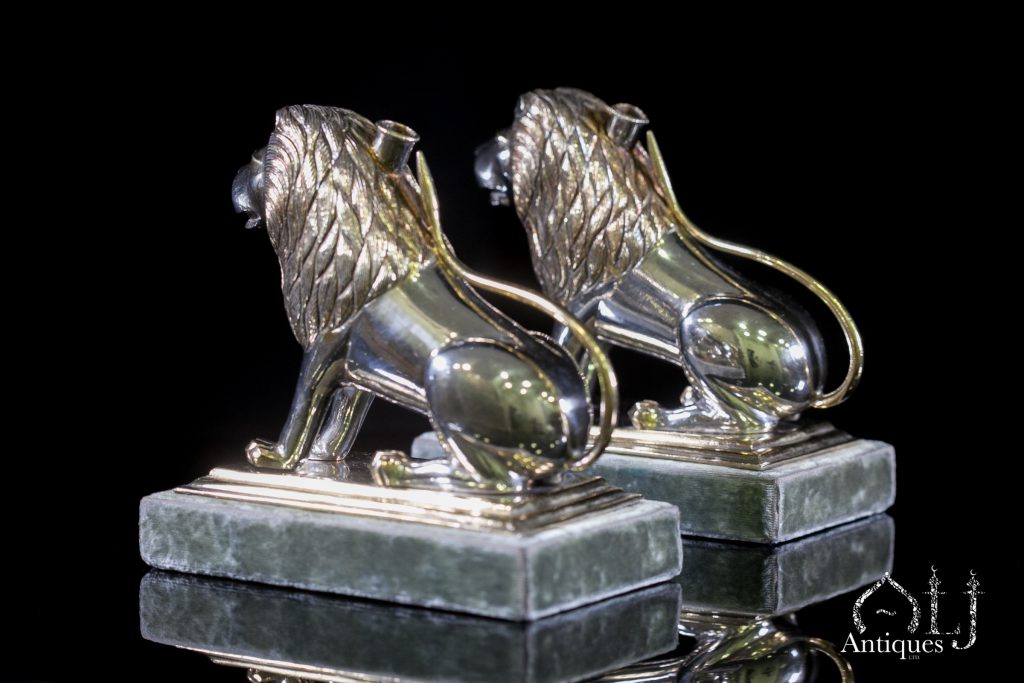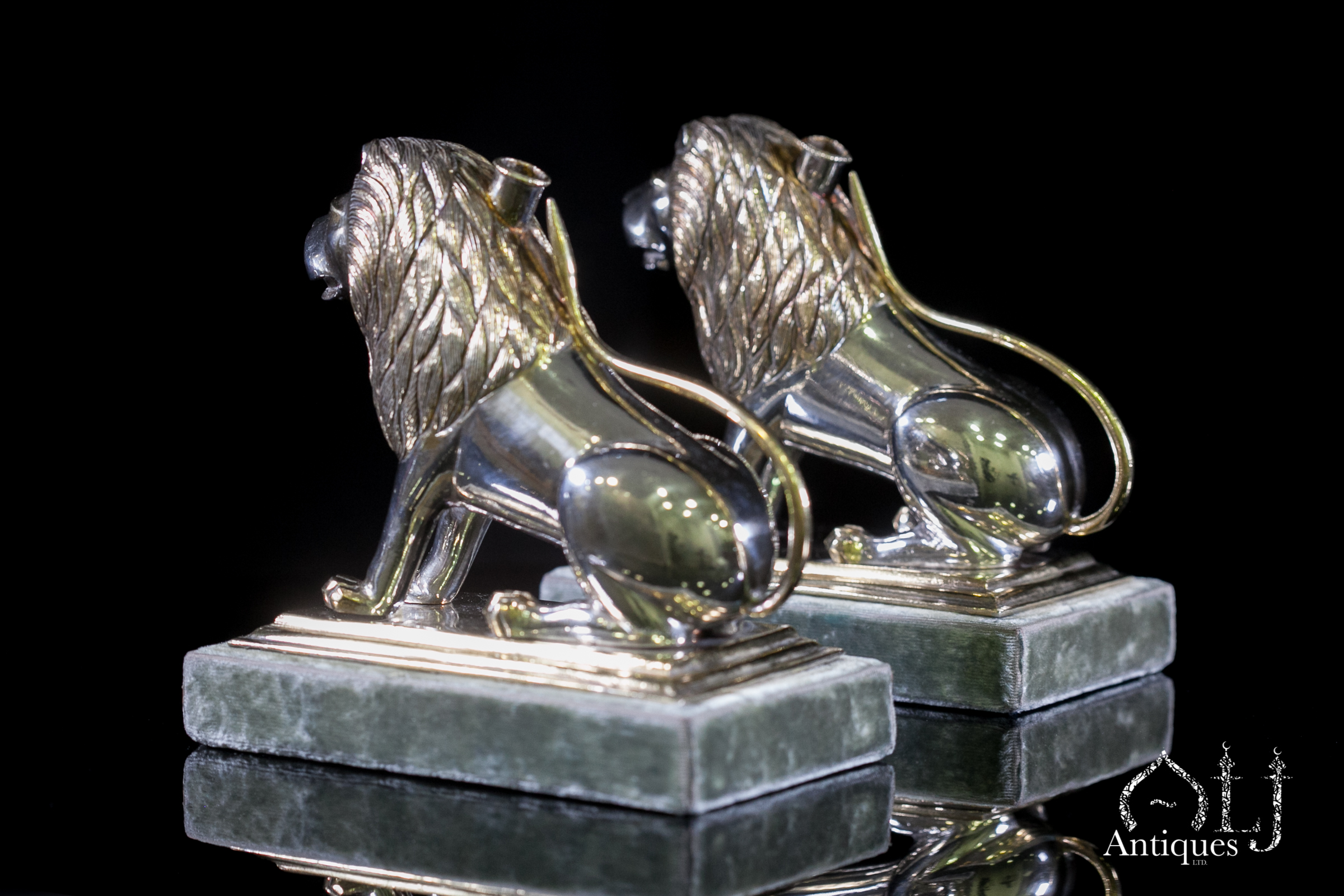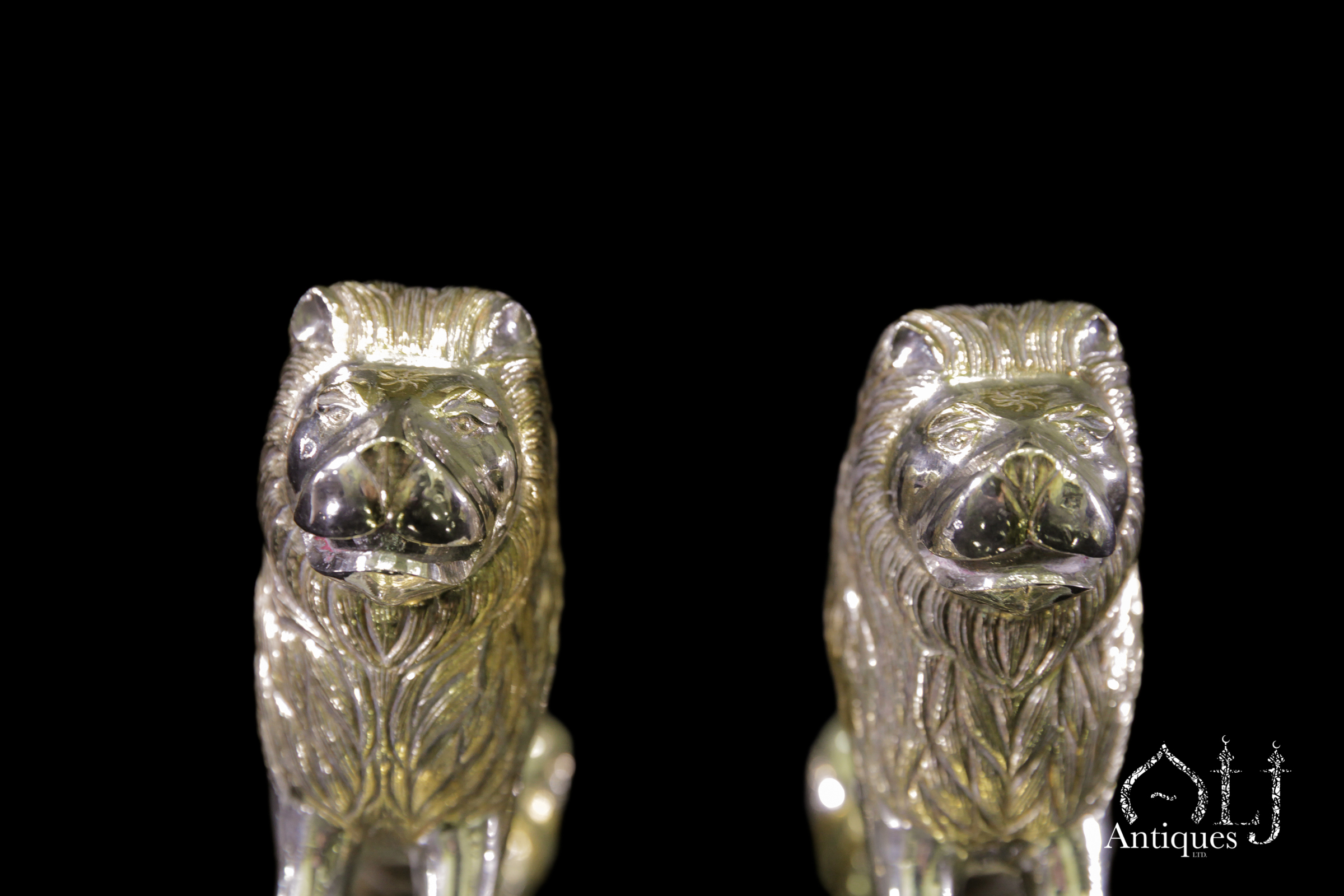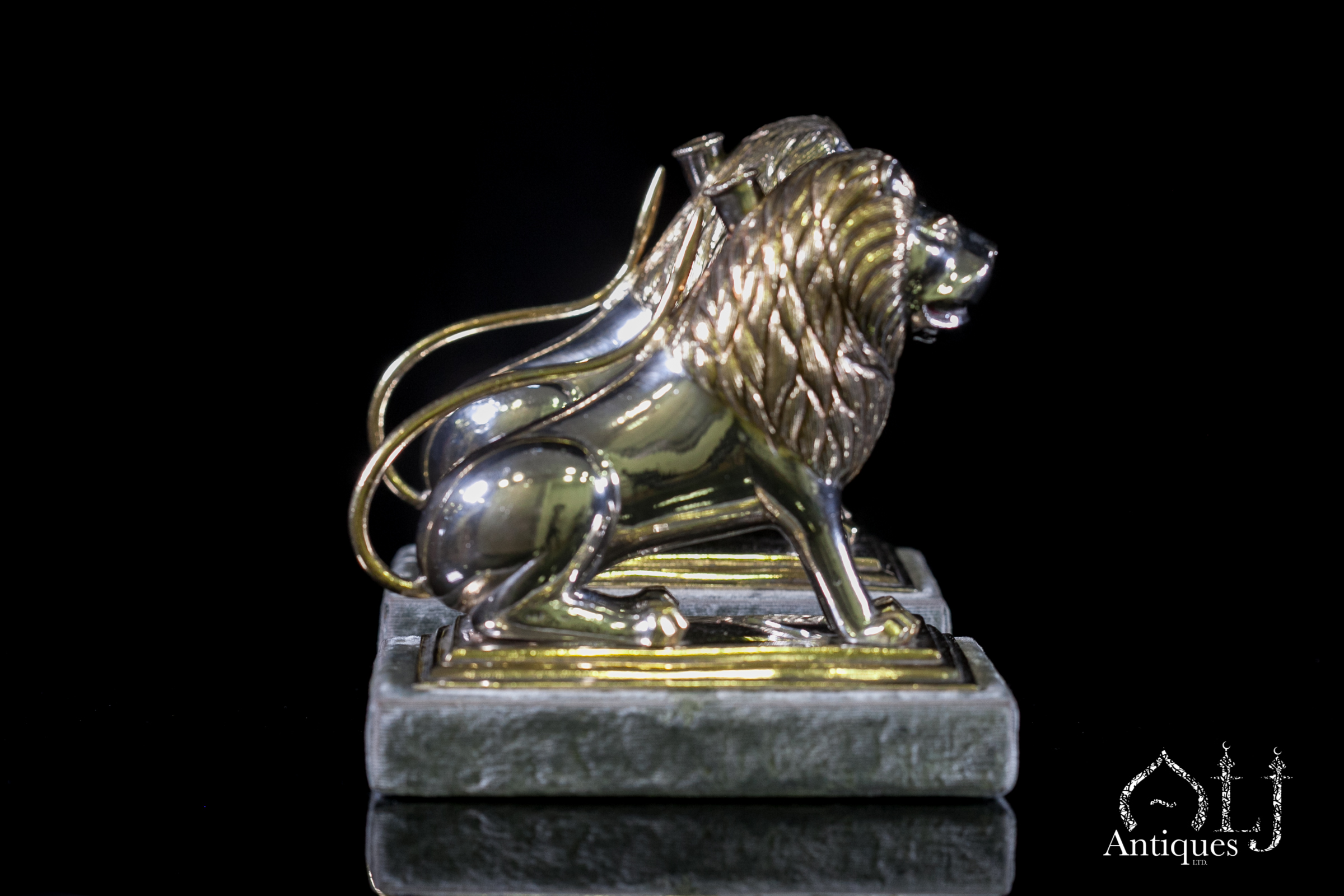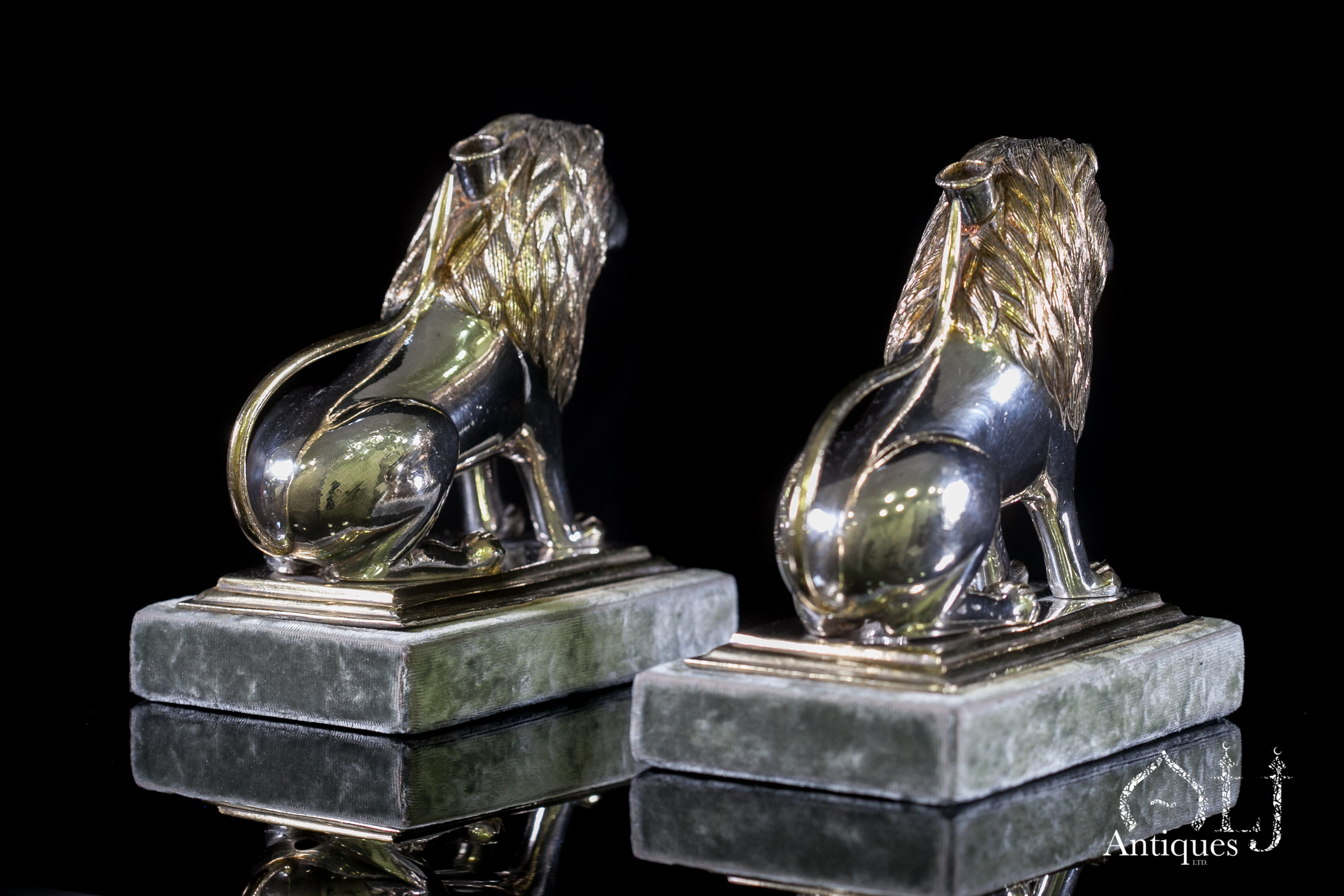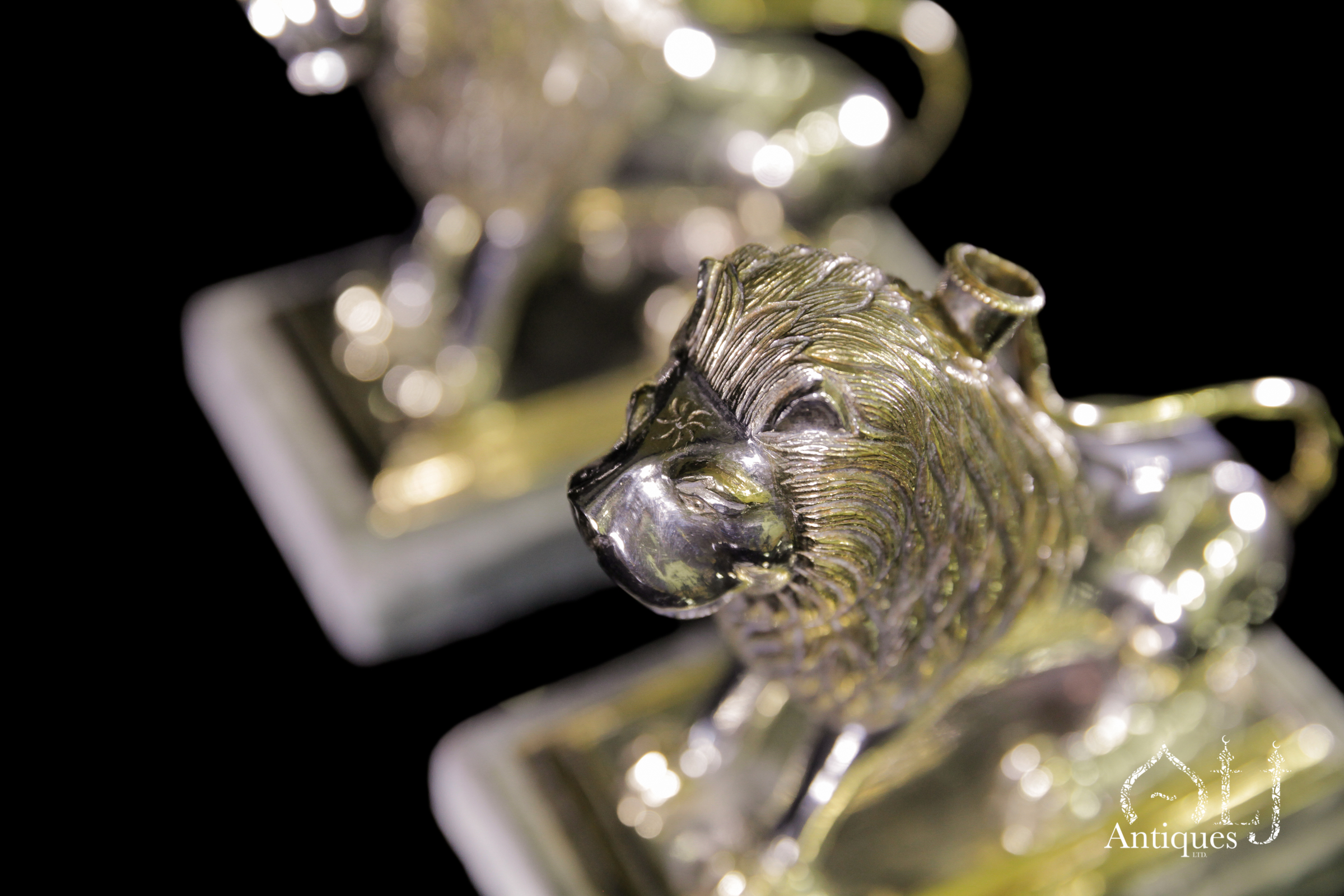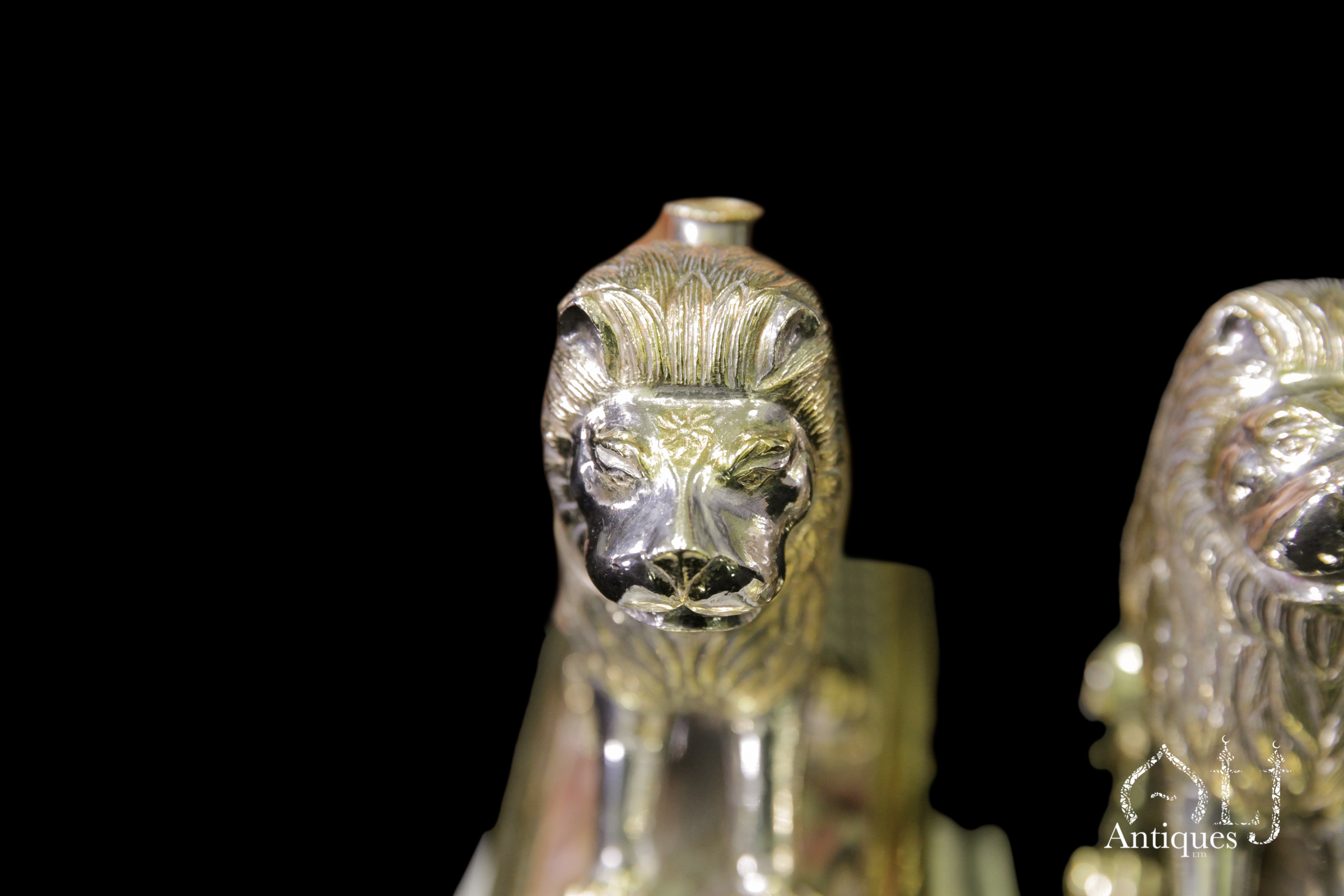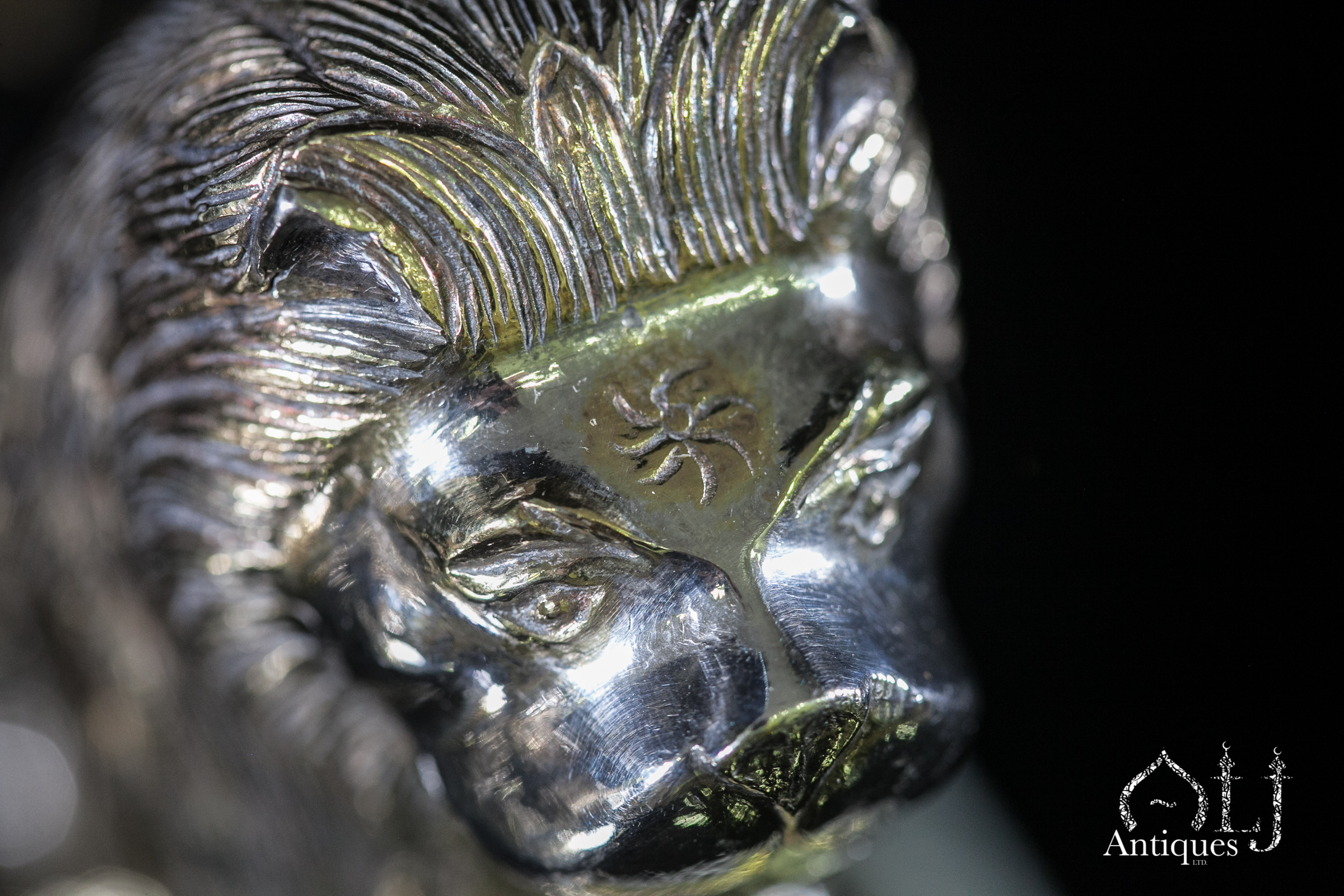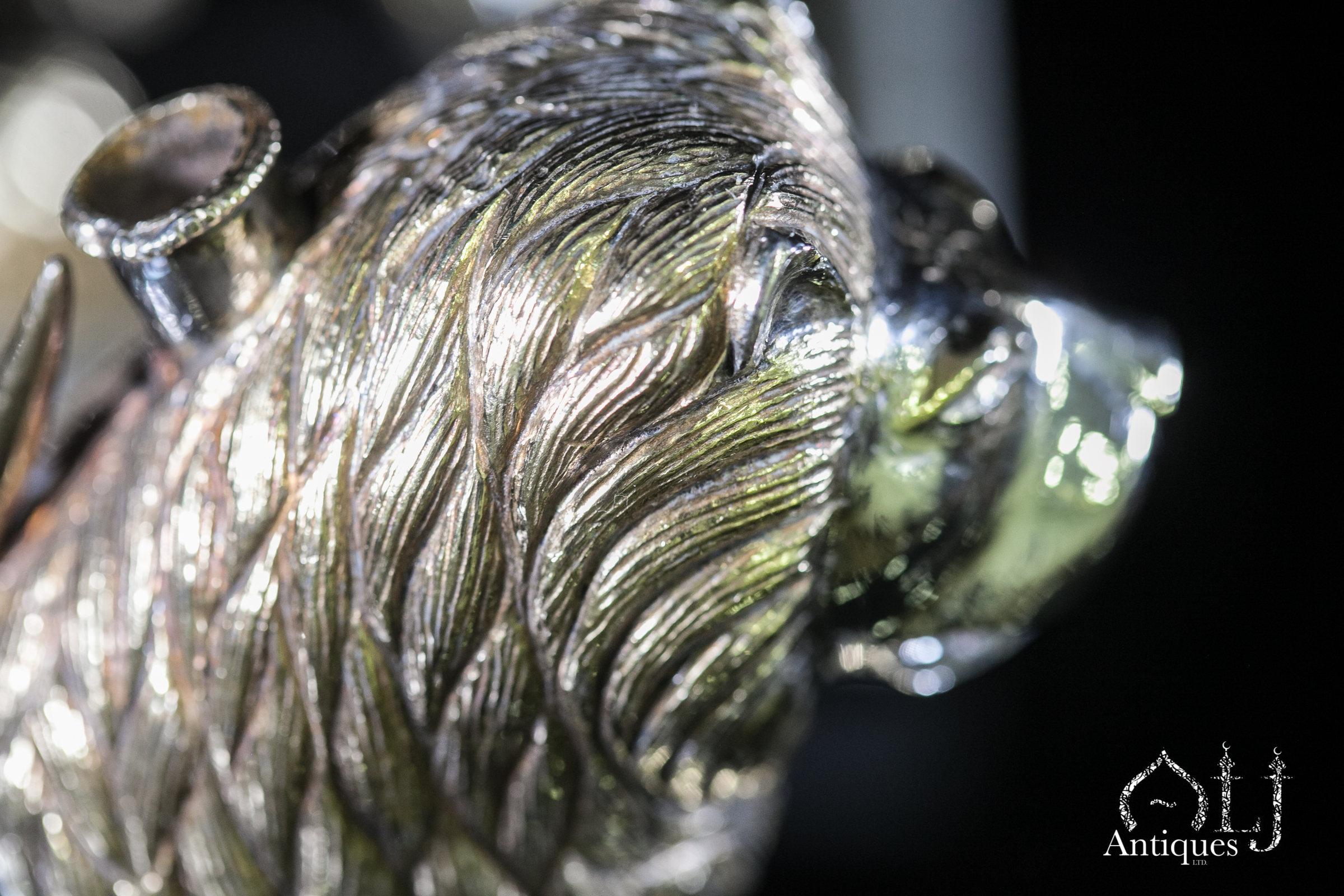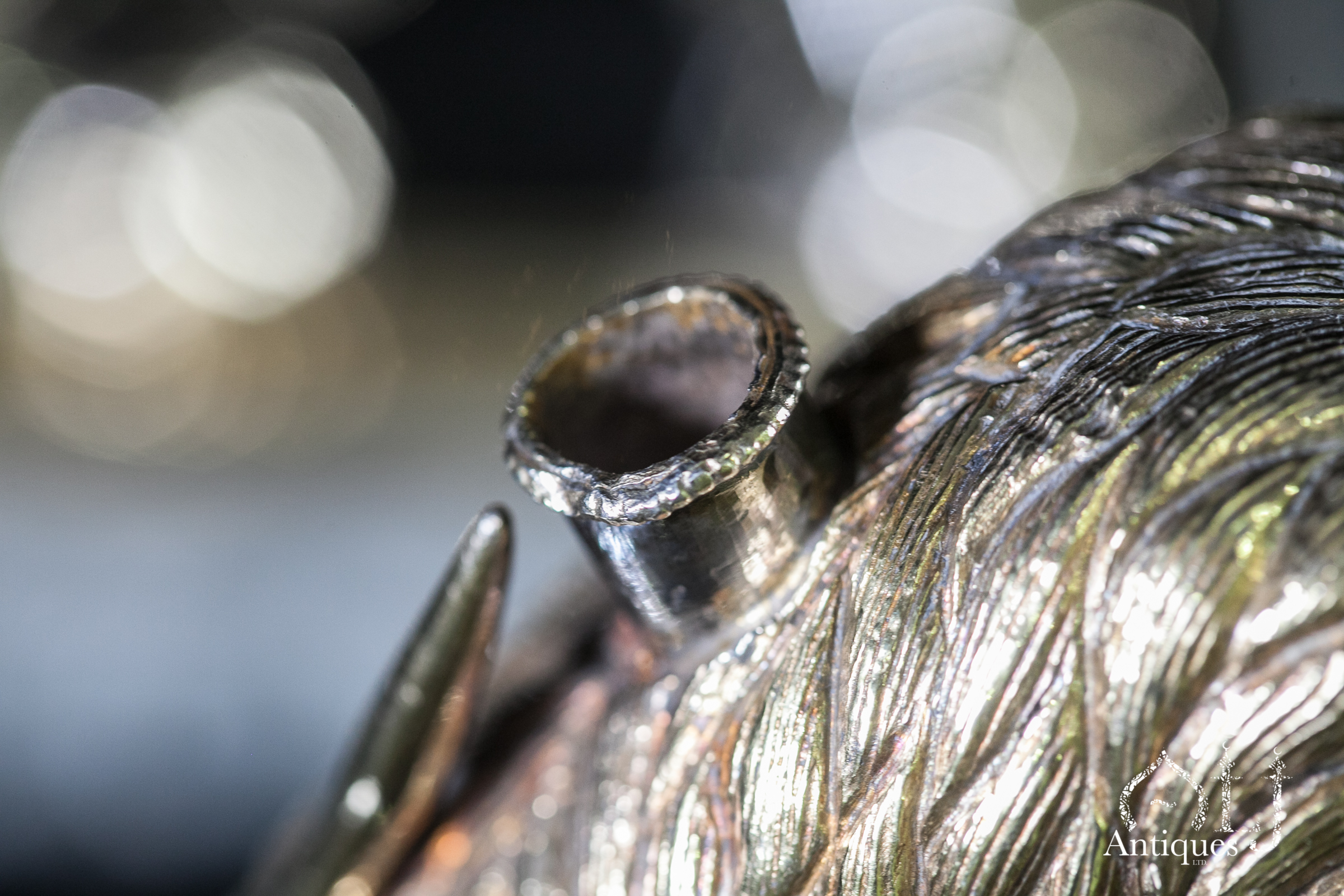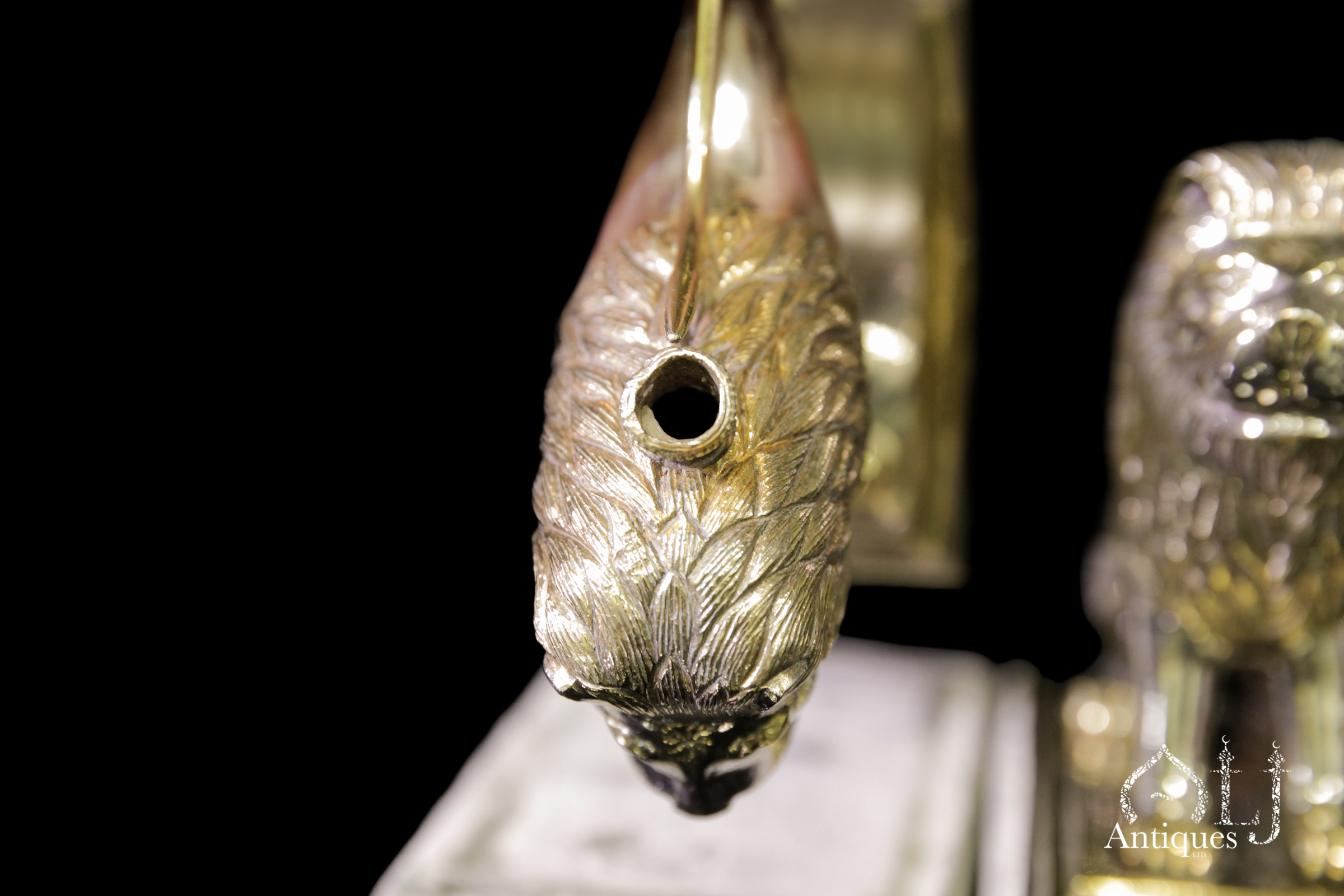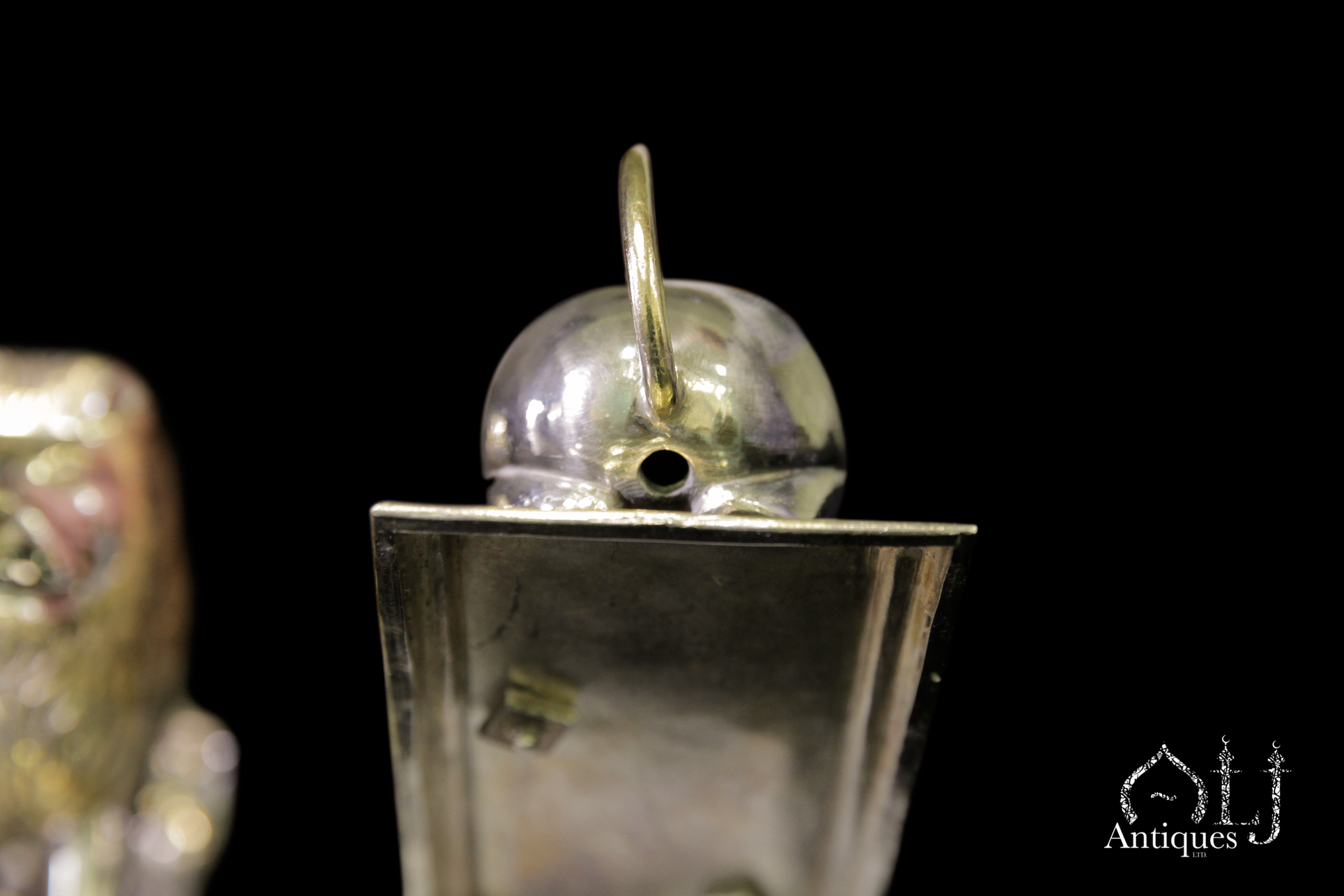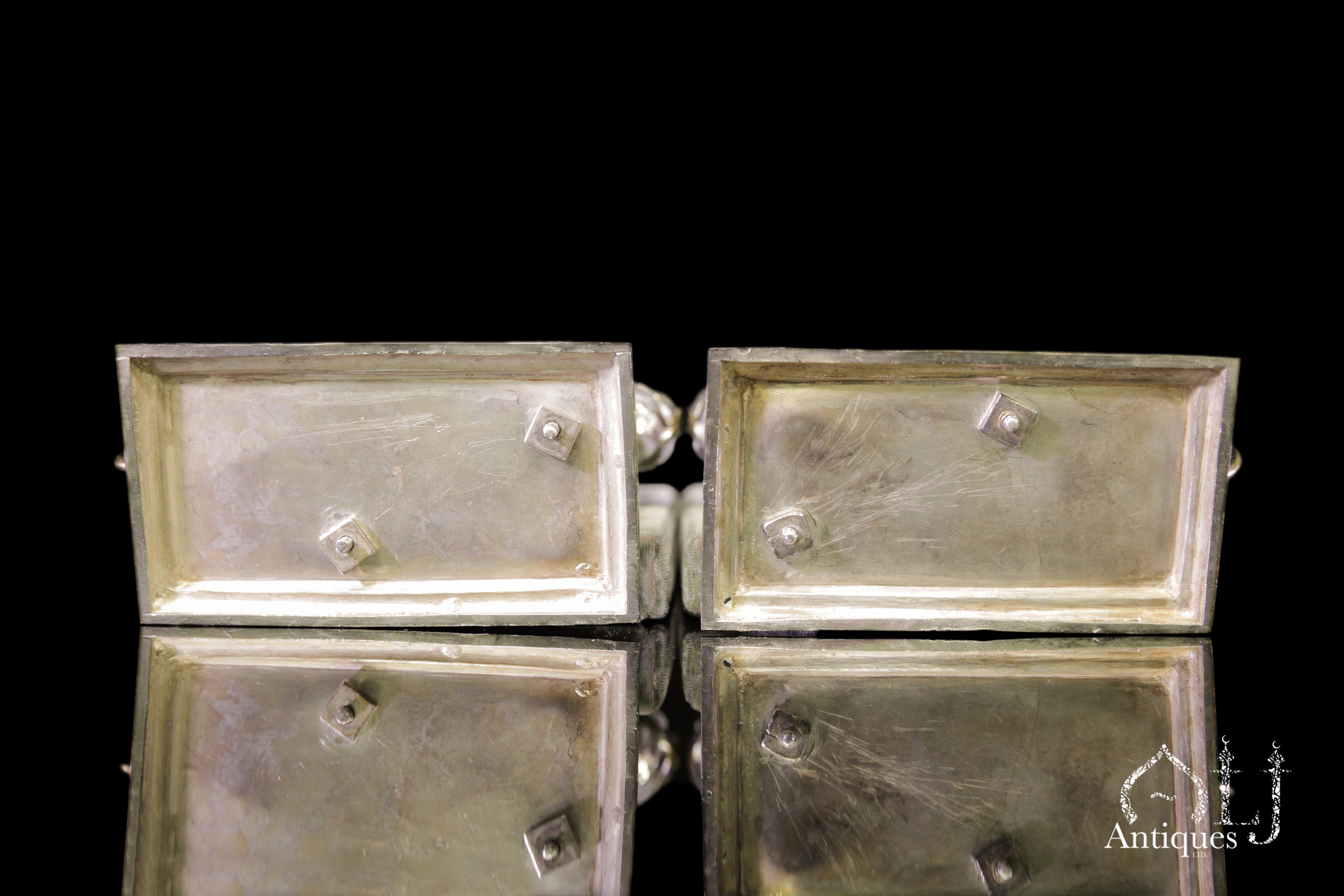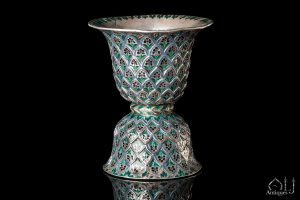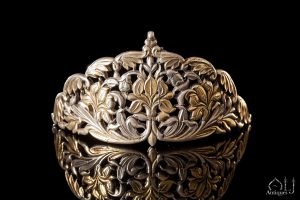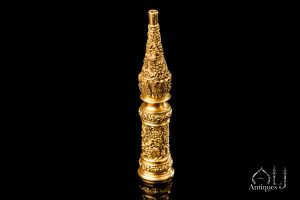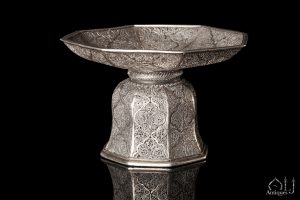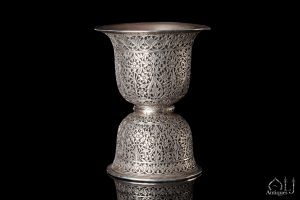Description
Throughout the various Indian civilizations, history, religions, mythology, Art and folklore the depiction of lions have always been considered as a symbol of extraordinary power, high status and their presence is usually associated with royalty, this view is also shared in other various civilizations in the world.
In India lions are made with different materials and styles or shapes, generally the northern shaped statue of a lion differs from the central and southern counterparts.
In furniture the lion figures are usually made out of carved wood and then the wooden body is mounted with finely chased and engraved silver or brass sheet.
This particular design of the two-seated lions is very common in Royal India and is usually constructed on each side of a throne or the lions can be constructed within the throne as an armrest.
Various shapes of antique lions were made in carved stone, which can be found in many ancient places and past civilizations in India.
The current national emblem of India is depicting three standing lions, the symbol is been adapted from the lion capital of the emperor Ashoka in Sarnath-India 250 BCE.
Liquid containers were usually used for washing water, pouring water or in religious or secular rituals.
In various ancient civilizations such as in the Islamic culture Aquamanails were used as sumptuous table decorations some of which were made with various materials such as in copper alloy and in brass etc. and had been made in various types and sizes some were large and other were small portable examples, mainly in the form of animals such as lions, Islamic aquamaniles were among the luxury items brought to the west via different sources, used for ritual purposes.
Our Current very finely made pair of liquid containers has two holes, one with long tube shaped opening at the top and one rounded hole located at the bottom of the lion underneath the lion’s tail which is been probably made to clear or to empty the liquid held inside the container in the form of the body of the lion.
Each lion is been fixated on top of a rectangular shaped Parcel Gilt silver tiered pedestal or platform or base with two threaded nuts and bolts.
Both beautiful lion’s mane are beautifully chiseled and gilt, the lion’s foreheads are engraved with swivel design decorations.
Taking in consideration the Lions are rather of portable small sizes but heavy in weight and their high quality the assumption is that these containers may well had been used to hold some sort of holly water, oil or scent which likely to had been mainly used by qualified members such as priests or monks or wealthy individuals.

